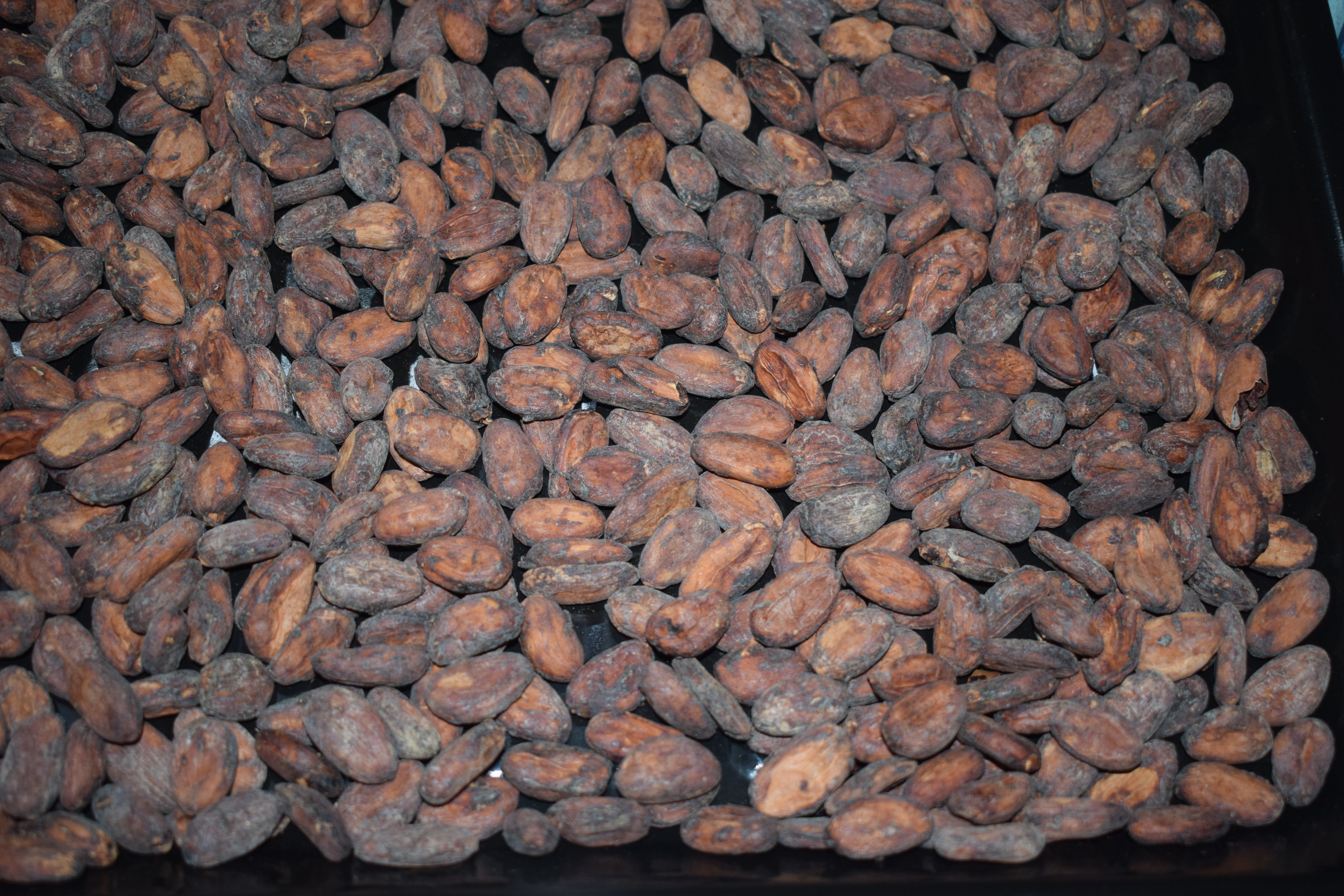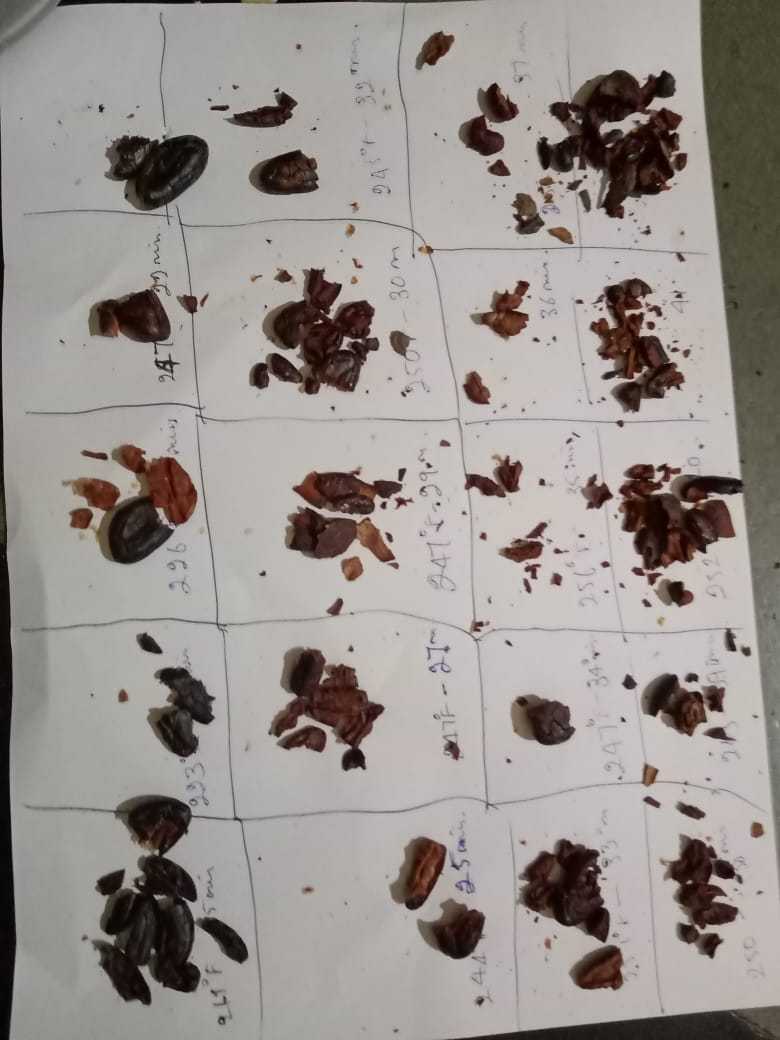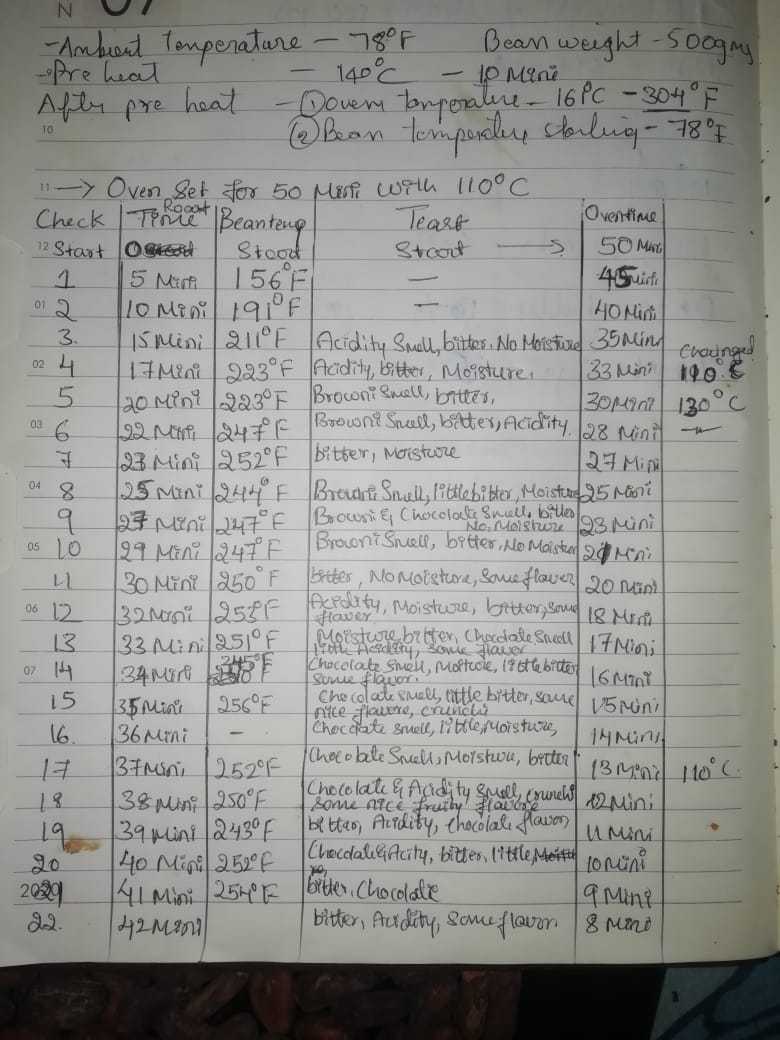|
|
Post by jack123 on Aug 5, 2020 3:22:02 GMT -5
Hi All, Hope you are all doing good. Yesterday I did roasting using my OTG oven. I am posting the images to do the talking  The beans doesn't have any acidity or astringency, but when you eat raw nibs it tastes bitter and nibs are dark in color. The beans smells somewhat brownie smell. Below is the actual beans before roasting  Below image represents the sample that I have taken at frequent intervals during roasting.  Below images shows everything about my roast.  Please give your opinion on my roasting profile. Is there anything that I am doing wrong or I need to improve? I have not done any course, is it possible to learn by doing things practically or should I really opt for a course to get into this business? Thank you. Attachments:
|
|
|
|
Post by Ben on Aug 5, 2020 12:45:42 GMT -5
I think it looks ok, although it's a very long roast. Really, though, without tasting the beans, it's not possible to say whether you're doing anything wrong or how it can be improved. Are you happy with the flavor? A couple notes: You generally don't want your roast to stall (have the beans stay at the same temp or drop temp). It seems like you basically hit your end of roast temp at 23 minutes and then kept roasting for 20 more minutes. Roasting by just setting the oven at a certain temp and leaving it there is unlikely to bring out the best flavors in your beans. You need to test different profiles to develop the one that works best for your beans. Unlike with coffee, there is no real visible change to cocoa beans when roasting. Different beans in a lot will taste different. Tasting one or two beans isn't enough to judge a roast. I'd highly recommend reading the Ask the Alchemist posts about roasting and roast profiles. They don't translate directly to roasting in an oven, but there's a lot of great info there. They start around ATA #200 if I remember right. I know of makers who have learned to roast through trial and error and of makers who learned at a class. Either way is possible. Note that roasting is a really complex topic and one that takes a while to learn and understand. I've been doing this for 10 years and I still learn new things regularly.  |
|
|
|
Post by jack123 on Aug 6, 2020 22:13:45 GMT -5
Hi Ben, Thank you for taking your valuable time and replying, I appreciate it. Yeah, even I also felt I should have stopped at 23rd minute, but my wifey   said to go ahead with the roasting because there isn't any chocolate flavor coming. But I take full responsibility for what has happened. I did go through John's roasting articles from ATA 200 to 205, it was a lot of information related to drum roasting, but it still applies to a convection oven too. I am going to experiment with the roasting profile, need your inputs on this. I have an oven with 1600 Watts, it's a digital oven, there are several options in that. Below is the image.  Till now I used to select Bake and convection option. Kindly let me know at what temperature should I preheat and what could be my first high temperature to start with? Kindly share your inputs. Thank you so much and love you all. |
|
|
|
Post by Ben on Aug 6, 2020 22:41:06 GMT -5
I don't have specific answers to your questions about temperatures. Different beans are going to need different roast profiles to bring out the best flavors. You'll need to test and experiment to find what you like best. This page has some info with temps for oven roasting that may be helpful: chocolatealchemy.com/cocoa-bean-roasting/Note though, that the temps it gives are just a starting point, and the advice given will give a darker roast than is best for some beans (but great for other beans). |
|
|
|
Post by jack123 on Aug 8, 2020 12:46:16 GMT -5
Hi Ben,
Thank you for the information. Let me try it tomorrow and post the results here.
But I am not getting the hang of roasting. The bean tastes bitter after the roast is finished.
Thank you.
|
|
|
|
Post by Ben on Aug 9, 2020 8:10:19 GMT -5
Bitterness can be a sign of over-roasting. As you tried all those beans that you roasted, were they all bitter?
|
|
|
|
Post by jack123 on Aug 10, 2020 9:08:28 GMT -5
Hi Ben,
Thank you
Yes, it was bitter. But isn't bitter a part of dark chocolate flavour?
Regards
|
|
|
|
Post by Chip on Aug 10, 2020 10:45:28 GMT -5
jack123 , i think that bitter is a part of dark chocolate, but there is definitely a fine line between bitter and 'burnt.' Bitter can be a tartness, a nice "zing" if you will, whereas it can cross the line into a very unpleasant, scrunching up your face taste that is a real turn-off.
|
|
|
|
Post by Ben on Aug 10, 2020 11:04:21 GMT -5
jack123: From your comment, it sounds like you thought you weren't getting roasting because the beans tasted bitter after roasting. I disagree that bitterness is an inherent part of dark chocolate or that it is tartness. Bitterness is its own thing.  Tartness is usually (always?) due to acidity. |
|
|
|
Post by jack123 on Aug 12, 2020 14:50:35 GMT -5
Thank you, Ben and Chip,
Since I am a beginner, I am finding it difficult to create the roasting profile based on the bean smell (astringency, acidity, etc), taste, when to stop the roast, etc. Maybe I should hire an experienced chocolate maker before I get into this business. Because a lot of questions pop up in my mind, and this forum is a great source of information from awesome people.
Thank you.
|
|